Troubleshooting and Repairing Optical Transceiver Failures in SFP/SFP+ Modules
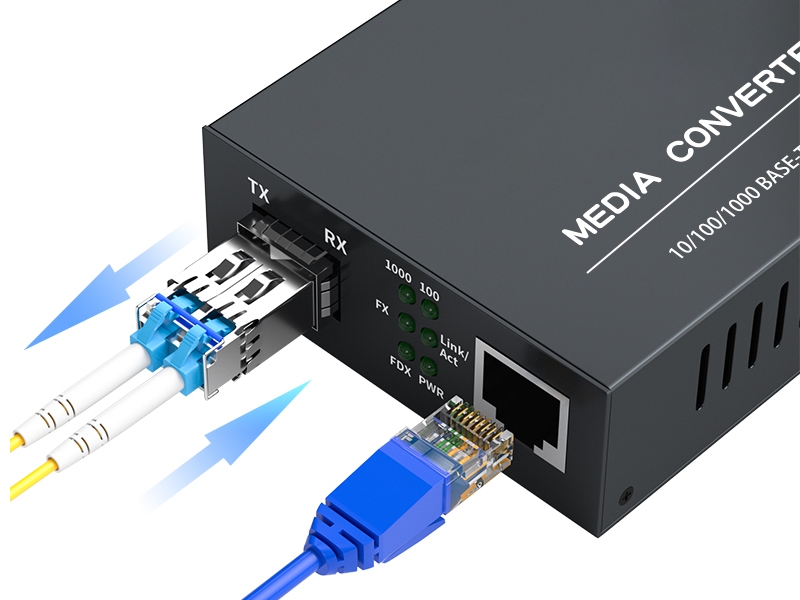
Have you ever experienced an unexpected network outage due to the failure of an SFP/SFP+ optical transceiver? Network outages can bring your ability to communicate and work to a halt, and your IT team will likely be frantically looking for a solution.It is important to understand how to troubleshoot and repair optical transceiver failures in order to keep your network running.By reviewing practical diagnostic techniques and repair advice, this article can help you rapidly troubleshoot the network issue and restore your network to a working state.
Failure Warning Signs: Common SFP Module Fault Types and Their Impact on Network Stability
SFP or SFP+ optical transceiver failure can happen in multiple recognizable ways.The most notable fault is the “module not detected” error, which describes a situation in which a switch cannot detect the transceiver.This is a result of hardware failure, poor connections, or firmware errors, and usually results in a complete halt of packet forwarding.
Secondly, a common SFP or SFP+ problem is link instability—meaning the link is continually dropping or fluctuating.This unpredictable behavior interrupts the flow of data through the SFP module, and can typically be attributed to dirty connectors, damaged cables, or mismatched SFP specifications.Any instability will degrade the throughput of the entire network and upset user expectations for connectivity.
Signal degradation, which can also be termed as loss of optical signal strength, will also suggest an optical transceiver problem.If the optical power being delivered to the receiver falls below the threshold level due to issues such as bending fiber, dirty endfaces, or aging components, this will usually result in decoding errors and a higher likelihood of retransmissions, and an overall degrading effect on network performance.Consistent signal power degradation will deteriorate network reliability and responsiveness.
Lastly, higher-than-normal power consumption will also suggest internal SFP module failure, such as laser drift or deformities in the electronic components.Higher-than-normal power consumption can lead to overheating of the module, adding additional stress to the components and leading to an unexpected link outage.Each of these faults serves to reduce overall network uptime (or availability), reduce overall quality of service, and increase the time involved in troubleshooting the specific SFP failure.For effective SFP troubleshooting, it is vital for engineers and administrators to be cognizant of these described symptoms so they can identify and fix the issue before the failure escalates to significant network disruption.
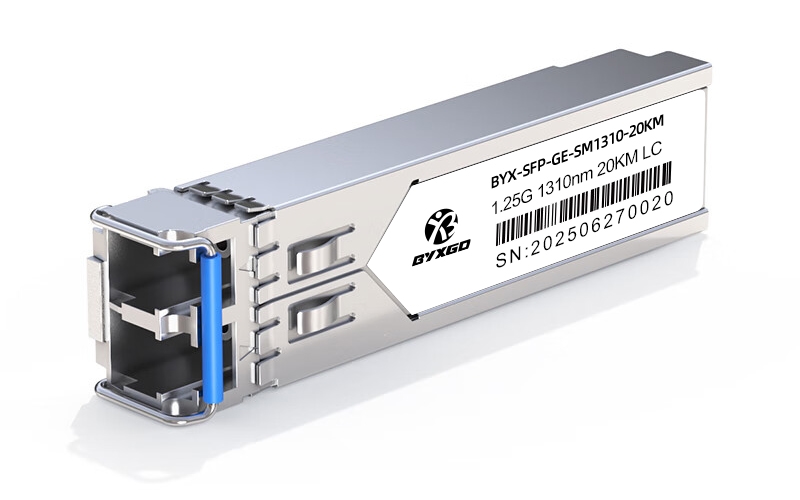
Hands-On Diagnosis: Systematic Troubleshooting from “Module Not Detected” to “Link Instability”
Step 1: Physical Inspection and Tool Prep
Before jumping into software or configuration checks, the first step is to perform a thorough physical inspection.Optical transceivers, as well as their related fiber cables, have the potential to undergo substantial wear each day, which can cause failures.Using an optical power meter, it is beneficial to measure the signal at the TX (transmit) and RX (receive) ends of the optical transceivers.This tool provides measures of signal strength and allows you to identify whether there are weak or lost signals before a failure occurs.
Cleaning supplies such as a lint-free wipe or isopropyl alcohol are also important tools to maintain clean fiber endfaces to help with connectivity.Dirty or scratched fiber connectors will lead to attenuation and instability in the link.Inspecting the fiber connectors under a microscope will allow access to the microscopic dirt that you cannot see with the naked eye.Having access to switch CLI tools will also serve as an indispensable tool for real time diagnostics.Typically, you will make use of common commands such as show interfaces transceiver detail and show logging to obtain module status, detected errors, and optical power levels.Always be sure to write down the data provided from the switch CLI tools so that you can later use that for trend analysis.
Step 2: Diagnosing the Detection Failure of Modules
One of the common issues seen when dealing with SFP troubleshooting is when the SFP module is simply not detected by the switch.The first check is to confirm physical connections.Check that the module sits correctly in the port and that the fiber cables are connected securely.The next step is to verify the firmware version on the switch is supported for the module.A module from a manufacturer may not be detected if the firmware has not been updated to acknowledge the newest module, or it could fail to read as a compatible third-party transceiver.If there is a question about module compatibility, you should refer back to the manufacturer’s compatibility matrices for cross-examination.
Sometimes it can be difficult to distinguish incompatibility from detection failures.If the module is on the approved list and still not detected, you could reseat the module or switch port locations as a preliminary check.Additionally, if you have a third-party module, you will want to confirm whether the switch performs vendor lock-in features to disallow connectivity to transceivers not validated by the switch vendor.Some switches may require specific configurations for transceivers to work or accept transceivers from different manufacturers, or modifications to firmware.
Step 3: Diagnosing Link Faults
Once you have confirmed the module is detected, and are working towards link-related issues such as signal loss or intermittent connectivity, you can proceed to the next step.The power levels on both TX and RX interfaces can be measured with the optical power meter.You will generally refer to the optical transceiver specifications or the module itself to determine what specific levels should be measured on each interface.The interface does matter after all since signals transmitted below threshold levels cause data errors or require retransmission of the data later.
You will also want to look carefully at the cleaning condition of the fiber.If there is any dirt at all, even a tiny fingerprint on the fiber connector at a point, it will ultimately result in degraded signals.If you fire up the optical power meter first, clean the links, and power the optical power meter again, you will most likely resolve the issue, rather than troubleshooting through software.
Do you know anything about cables?I ask because you will also want to check the cable’s integrity to rule out bending, breaks, and potential connector damage, as these introduce attenuation.This will also be an opportunity to look for impediments. Test your fiber cable while using the visual fault locator. Not all faults will be apparent by inspection.
Step 4: Advanced Diagnosis Steps
If you have taken care of the basic checks, and there are still problems, you can take a deeper look at the health of the module.Next, you would want to check for power consumption and watch for power spikes greater than expected, as this could indicate laser drift or some type of electronic fault within the SFP module.If the SFP module is drawing high amounts of power, you could risk overheating the module, causing it to fail at some point.
It is beneficial to monitor temperature both inside the switches and transceivers.Most often, excess heat stresses components, shortens useful life, and causes intermittent faults, all things I am typically trying to avoid while monitoring equipment. As a note, keeping environmental controls monitored, such as temperature and humidity levels, is important.This is especially true for sensitive optical network equipment housed in data centers.Test your cooling systems, use monitors, and take into account humidity as well for maintaining the life cycles of sensitive optical network components.
In summary, it is advisable to use these advanced steps in tandem with the continued use of preventative maintenance for a strategic and common-sense approach to maximizing the life cycles of your SFP modules with network reliability.
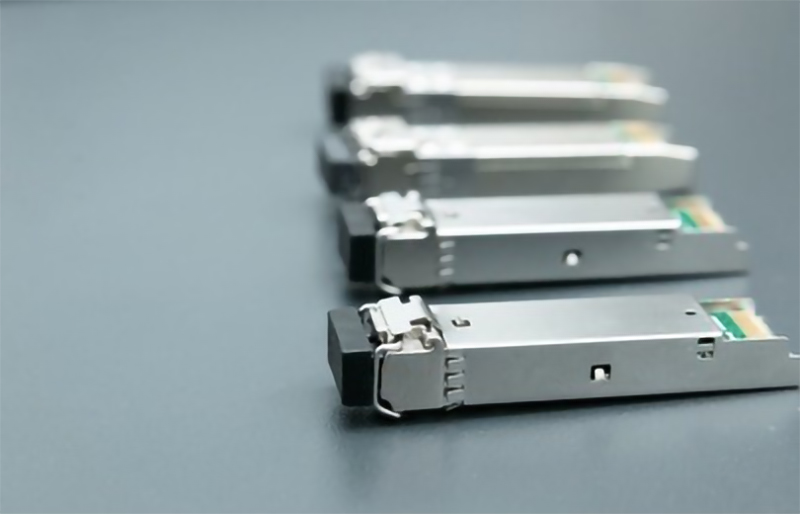
Real-World Case Study & Exclusive Performance Testing Data
Case Study: Diagnosing and Fixing the SFP-10G-LR Failures
An enterprise financial institution was dealing with continuous network slowdowns and interruptions to service due to failed SFP-10G-LR modules in its core switches.The first indications were link drops and excessive bit error rates (BER), which limited throughput opportunities during opportune hours.The IT team decided to run SFP test diagnostics, which confirmed that the modules had difficulty being detected occasionally.
Optical power measurements found the TX level was varied. The RX optical power dropped below acceptable levels, meaning the signal was degrading.The team methodically replaced the modules suspected to have failed, one module at a time, using vendor-approved modules to isolate the failed units.After replacing the modules, the following analysis showed a throughput increase from an average of 5 Gbps throughput to 9.8 Gbps throughput, with the BER down more than 75%.This confirmed that the failure had occurred due to aging transceiver lasers and optical performance drifts over time.
Exclusive Performance Testing: OEM and Third-Party
To understand the practical differences, the lab performed side-by-side comparisons of OEM SFP-10G-LR modules and vendor-recommended third-party modules.Tests were performed to measure Bit Error Rate, signal stability, operable temperatures, and optical power consistency within the same environment.
- Bit Error Rate (BER):
The OEM modules had BER values consistently less than 10^-12, which was an indication that the data was intact.The third-party modules occasionally increased to a BER of 10^-9 during the stress tests, which could risk packet retransmissions and latency. - Stability:
The OEM modules had a steady link without dropouts across 72 hours, but the third-party modules exhibited intermittent link flapping in 15% of the testing, requiring the intervention of the analysts. - Temperature Performance:
The OEM units were running, on average, 5°C cooler than the third-party models.The thermal performance increase is an indication of thermal stress.The third-party modules ran much warmer, which increases the risk of un-recoverable failures, even with continuous running. - Optical Power:
There was not much difference in the initial optical power of the OEM and third-party modules, but the third-party units lost power faster after continued runtime, and the signal was weakened.
 Implications and Conclusions
Implications and Conclusions
While these performance differences justify why SFP-10G-LR troubleshooting normally comes back to module quality, there is often a short-term cost savings associated with using third-party modules.This cost savings in the short term may not justify the long-term reliability and stability of service within the network, when network performance should have greater consideration.
This case study demonstrates a direct relationship between optical transceiver failure and degradation of network performance, while the previous table of data provides the distinguished characteristics of the parameters that indicate the health of the SFP module. Network engineers looking to improve service to client networks are encouraged to use verified modules and have a regular SFP test routine with a focus on BER, temperature, and optical power.
In conjunction with using verified modules, the testing will not only provide speedy diagnostics of failures, but it will also provide an indication of the expected life of SFP modules through diagnosis and decision before failure, while providing more overall uptime.
Failure Prevention: Best Maintenance Practices to Extend SFP Module Lifespan
The best way to keep your SFP modules functioning well is to have regular SFP maintenance that ensures they remain clean and in a good environment.One of the most important maintenance aspects is cleaning the fiber endfaces on a regular basis.Fiber optic connectors are sensitive to the smallest amount of dirt or oil and micro scratching and will not carry signals properly if the endfaces are dirty.Use high-quality lint-free dry wipes with a small amount of isopropyl alcohol that dissipates quickly, along with appropriate or manufactured Q-tips or pens that are made for cleaning fiber optics.When you follow these very simple procedures, you can reduce the chances of signal attenuation that can cause optical transceivers to fail.
Environmental impacts are also critical contributors to SFP longevity.If your modules are in a temperature range over the manufacturer’s specifications, the components may age faster than normal.Alternatively, if you have too much humidity, they may corrode altogether.You should keep the switch and module environment within the manufacturer’s specifications.The temperature and majority of humidity specifications are somewhere between 0-70 degrees Celsius, and between 10-85% relative humidity.It is usually a good idea to install appropriate cooling or humidity detection as well, which will help to maintain these conditions and stabilize your SFPs.
Lastly, testing firmware and compatibility is just as important when troubleshooting your SFPs.Whenever a new firmware update is released, it generally fixes bugs that affect proper detection of the module or optimal transmission rates, as well as compatibility with a newer model transceiver.It is highly recommended that a network administrator schedules and checks for firmware updates regularly on switches to keep up with changing transceiver technology as well.
In summary, the best practices for SFP-related maintenance to help your SFP modules last longer are to clean the optical fibers regularly, control the environment, and manage firmware. Following these three practices will lead to less downtime and failures and greater overall reliability for your desired amplified network.
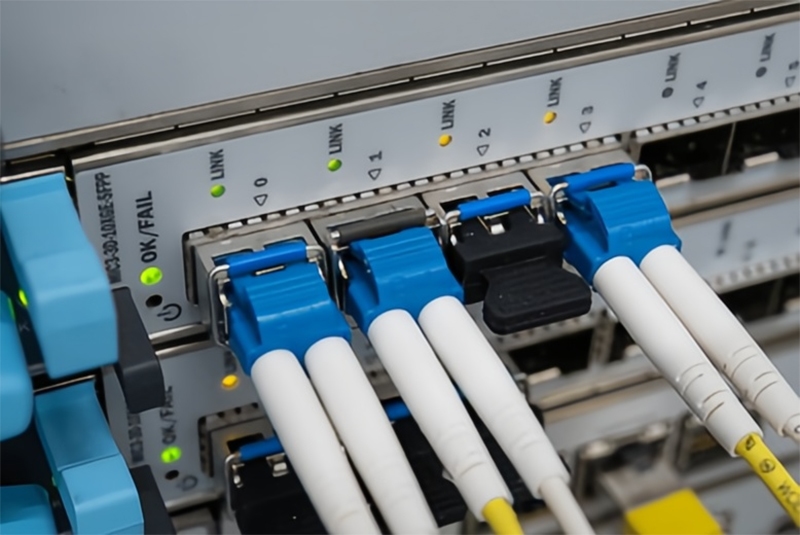
FAQs on SFP Troubleshooting and Repair
- Why isn’t my SFP module recognized by the switch?
Often, switches will not recognize SFP modules because they are not tightly connected, they are incompatible modules, or the switch firmware needs to be updated.In some cases, third-party modules will not be recognized unless the switch is configured specifically to support those modules (this will depend on the model of the switch). - How do I test the operation of an SFP-10G-LR module?
Optical power meters can be used to check both TX and RX power levels, and you can check the link status with the show interfaces transceiver detail command on the switch CLI.You can also look at error statistics to get a general idea of how the module is performing. - What tools are needed for SFP troubleshooting?
The main tools needed will always be an optical power meter, a fiber optic cleaning kit, a visual fault locator, and access to the switch CLI for diagnostics. - How do I tell if I have signal degradation or an intermittent link issue?
Signal degradation is often determined by looking for increased bit error rates and checking for optical power values fluctuating significantly while testing.An intermittent link will often come from dirty connectors or damaged cables, both of which can usually be resolved through cleaning or inspection. - Can third-party SFP modules be a problem?
Yes! Non-OEM SFP modules may not necessarily adhere to the vendor’s specifications, which could lead to the module not being detected, reduced performance, or the possibility of the vendor not providing support. - How important is fiber cleaning for SFP performance?
Fiber cleaning is extremely important! Even the smallest amount of contamination could lead to significant loss of signal, leading to intermittent or failed connections. - What does it mean if the SFP is hot?
High SFP temperatures often indicate issues related to laser drift potential or overheating internal electronics, which could lead to the potential failure of the SFP. - How do I get switch firmware for new SFP modules to be usable on the switch?
It depends on the vendor. Always check the vendor’s website for firmware updates and see if they have a new version.It is important to download only the correct version and always follow safe upgrade procedures to avoid impacting network operations while upgrading. - How do I read the diagnostics logs or error codes?
Logs can give indications as to what is causing issues with the link and the health of the SFP module.The major items to look for are any indication of repeated errors, signal loss, or power fluctuations, as well as any indication of issues concerning the SFP’s health.At this point, also reference documentation from the vendor/device. - When should I replace an SFP module?
Replace an SFP module that is failing repeatedly from an error perspective, exhibiting physical damage, or its performance has degraded overall—after all troubleshooting has been done, including cleaning.
Take Action Now to Save Your Network
It is essential to proactively address SFP troubleshooting and maintenance, as well as the possible failure of your optical transceiver.It is important to identify your issues early and take action to develop best practices for maintaining reliability and performance within your network.Always invest in trusted, certified, and competent individuals related to the needs of your network.Taking these measures today ensures your network can respond tomorrow!

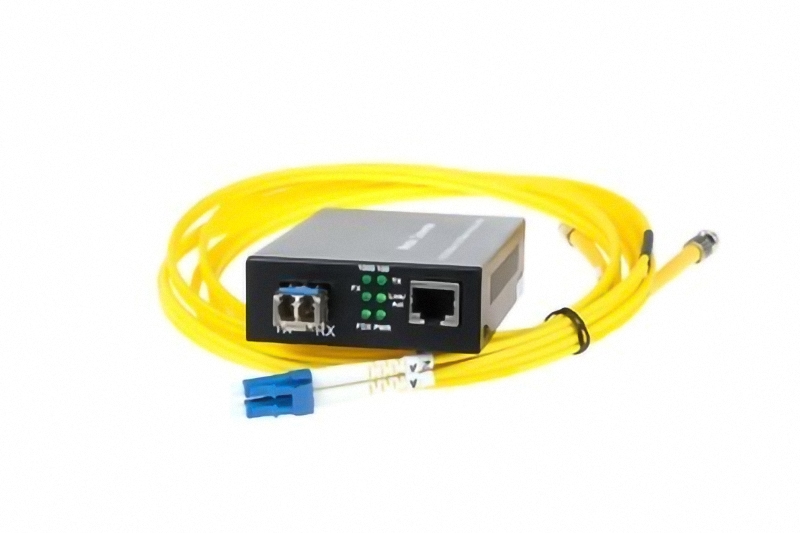 Implications and Conclusions
Implications and Conclusions